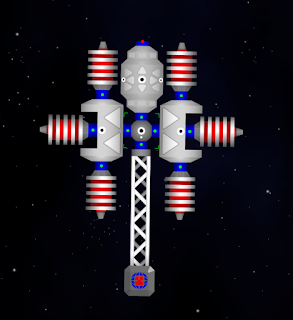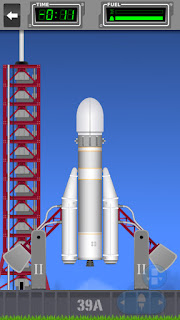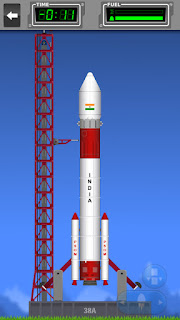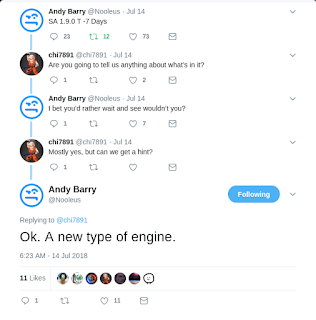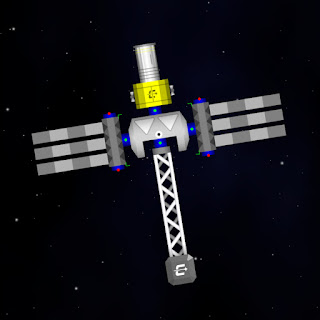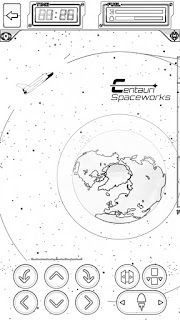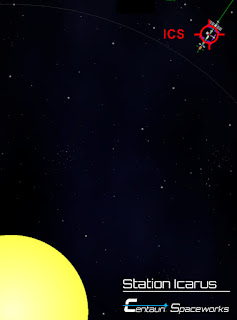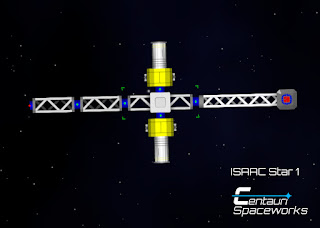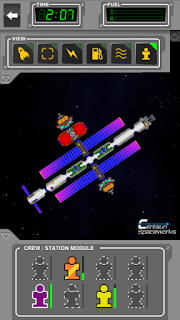Centauri Spaceworks has been branching out into the realm of
Tiny Space Program. Tiny Space program is a fun app where you can run your own space program to explore and mine other planets and moons. You should try it out if you haven't already.
Despite being an interesting game, one of the major issues with the interface in Tiny Space Program is that it does not scale well. Lists are often contained to a fixed space, and end up overflowing that space because they don't scroll.
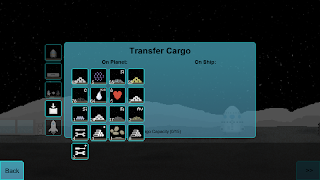 |
| Items overflowing out of a panel in Tiny Space Program |
Here is a look at what the interface of Tiny Space Program could look like if some of those issues were fixed.
One of the proposed changes is leveraging the buildings on the home screen for functionality. In the current design, many buttons placed are around the edge of the home screen. The center is taken up by the building view. However, the building view only has one functional building out of six. Let's move some of that functionality into the center of the screen where scrolling can be leveraged. Other changes include labeling the buildings so players don't have to guess at their functionality.
Instead of opening up a small pop-up in the center of the screen, the different sections take over more of the screen with a side panel or a full screen view and enable scrolling. Enabling scrolling allows larger items with more information, yet still allows all the items to accessible.
Compare the old market screen to the new market screen. In the current screen you only see the icon and the count of items for all the items. You only see the name and cost when you select an individual item. The market will be limited to 10 items before the items begin to overflow into the text area.
 |
| Current Market screen |
In the proposed version, you can see the name, cost, and count of all items. A large number of items can be displayed because the list of items scrolls. The 'Buy 1' and 'Buy Multiple' buttons do overlap the item list, however the item list can be scrolled to bring those items underneath into an unobstructed area.
 |
| Proposed design for the market screen |
The VAB building also shows more information. In the current New Mission screen, only an icon of the ship is available. In the proposed VAB interface, the icon, name, as well as some key stats of the ship are available.
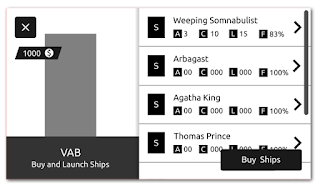 |
| Proposed screen for ships |
When selecting a ship the key stats about that ship are always visible. The actions, astronauts, and cargo can be drilled into for more details. In the astronaut detail view, the full name of the astronaut is available instead of just an icon.
 |
| Proposed Ship Detail screen |
Tiny Space Program has a lot of potential. It will be interesting to see how the interface develops and if Jerry, the developer, is able to address the scaling issues.
@Jerry, if you like these ideas, you are welcome to use them for my name in the credits. Let's talk :)











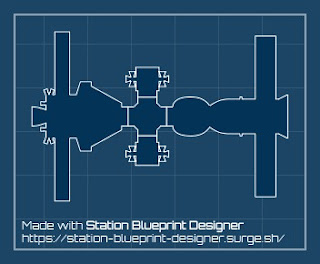


 Launch Station Blueprint Designer
Launch Station Blueprint Designer